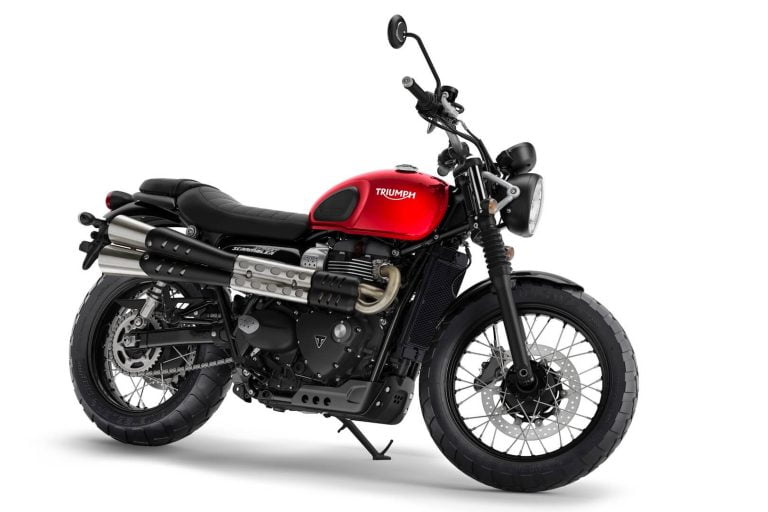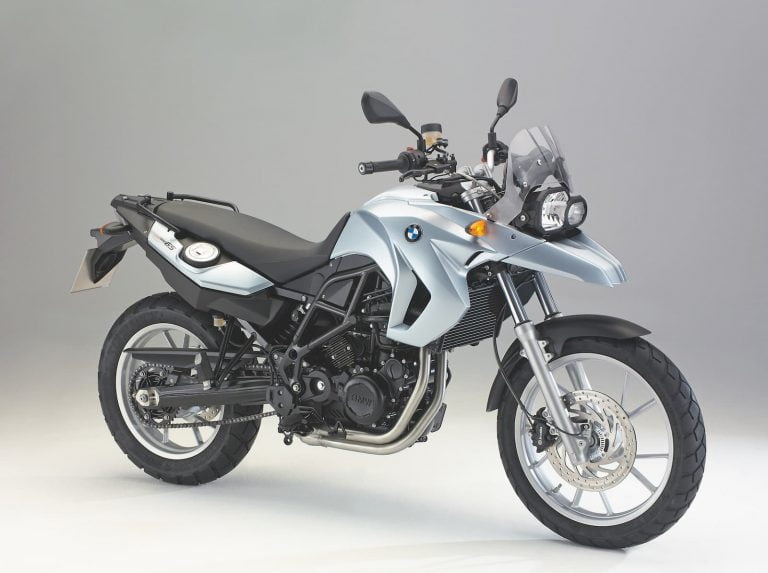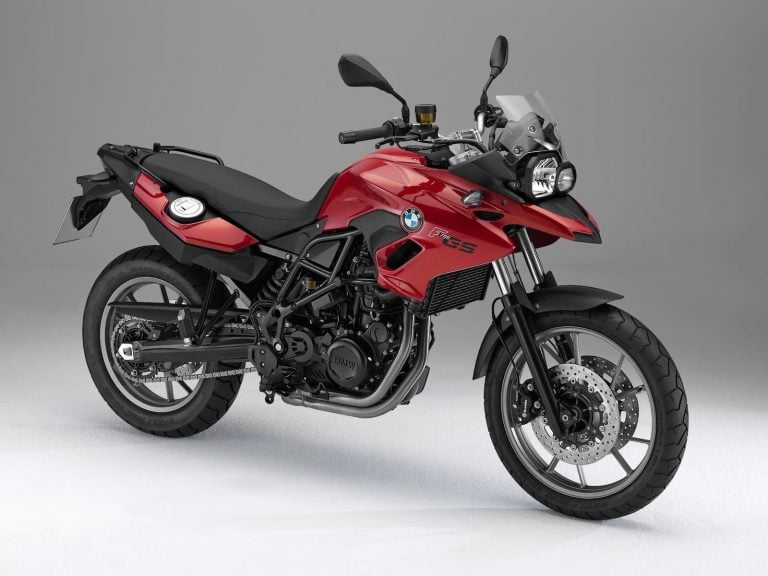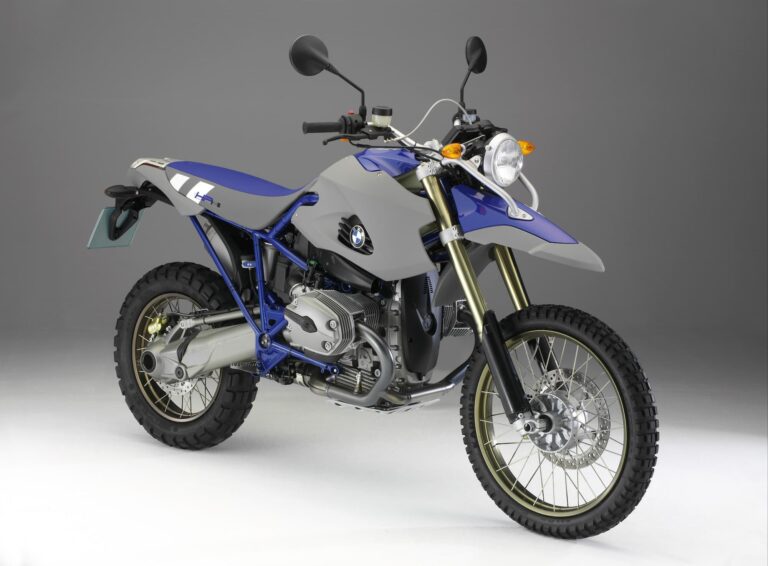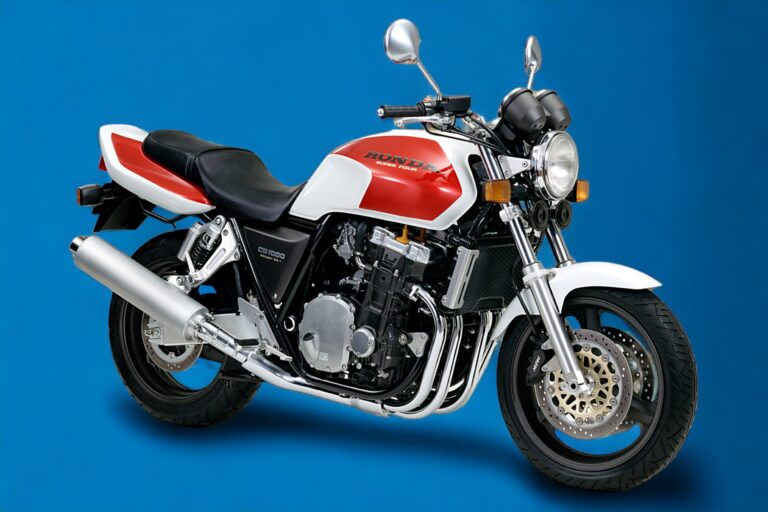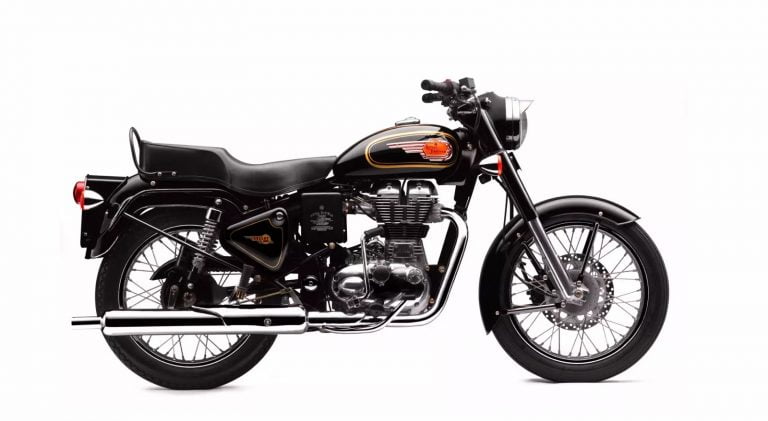Royal Enfield Bullet 350 Carb (BS4) Maintenance Schedule and Service Intervals
This is the maintenance schedule and service intervals for the Royal Enfield Bullet 350, one of the motorcycles that is part of Royal Enfield’s legacy since the very beginning.
This version Royal Enfield Bullet 350 is also known as the Bullet 350 UCE, as it’s with the newer Unit Construction Engine, but it’s also known as the Bullet 350 BSIV (BS4) for the emissions spec to which it complies, or the Bullet 350 Carb. Here we’ll just call it the Bullet 350.
You may be looking for the maintenance schedule of the recent fuel-injected Royal Enfield Bullet 350 EFI.
The Bullet 350 also came in 350 ES form (with an electric starter). Maintenance for both is the same.
This maintenance schedule is for the most recent model of Bullet 350, sold since 2009 — using the “Unit Construction Engine”, with a carburettor.
The UCE Royal Enfield Bullet 350 uses a carburettor-fed 346cc carburettor-fed engine that makes a peak of 14 kW (19 hp) @ 5,250 rpm, and peak torque of 28 Nm (20 ft-lb) @ 4,000 rpm.
The Royal Enfield Bullet 350 (Carb) was sold alongside its bigger brother the Bullet 500 (which had fuel injection for longer) for a while.
From 2020, the Bullet 350 was updated to fuel injection (the BS6 model).
This site has links for things like oil and spark plugs from which we earn a commission (which unfortunately nobody can save, not even us). If you appreciate this work, then please use those links. Thanks!
Maintenance schedule for the Royal Enfield Bullet 350
Like a few other Royal Enfield motorcycles, the Bullet 350 has free service in a few markets (up to 18 months), and quite a large warranty period (up to 3 years).
Beyond that, the maintenance schedule is below. It’s quite similar to the maintenance schedule for the Bullet 500 fundamentally, but the line items are different.
You can do a lot of the maintenance below with the on-board toolkit… and YouTube.
Notes:
- Beyond 50,000 km (the end of the table below), keep doing your own service after that period in the same pattern shown.
- You may also wish to inspect and lubricate the swingarm pivot bush and spacer every 5,000 km.
- Valve check is not in the schedule, but is mentioned as part of service activities at the 20,000 mark only.
- If you ride in unusually wet, muddy, or dusty conditions, then check, adjust, and lubricate everything more frequently (especially the chain, air filter, oil/oil filter).
Legend
- I = Inspect (Clean, Adjust, Lubricate, or Replace as necessary)
- A = Adjust
- C = Clean
- L = Lubricate
- R = Replace
- I/A/L/R = Inspect/Adjust/Lubricate/Replace if necessary.
| Kms (x 1000) | 0.5 | 5 | 10 | 15 | 20 | 25 | 30 | 35 | 40 | 45 | 50 | |
|---|---|---|---|---|---|---|---|---|---|---|---|---|
| Months | Notes | 1.5 | 6 | 12 | 18 | 24 | 30 | 36 | 42 | 48 | 54 | 60 |
| Engine Oil | Check level at every 1000 Kms or earlier as required | R | I | R | I | R | I | R | I | R | I | R |
| Engine oil filter element | R | R | R | R | R | R | ||||||
| Engine sump filter (oil retainer) | C | C | C | C | C | C | ||||||
| Spark plug | C&A | C&A | C&A | R | C&A | C&A | R | C&A | C&A | R | C&A | |
| Magnetic drain plug under gear box and secondary drain plug under crankshaft in crankcase right | C | C | C | C | C | C | ||||||
| HT leads for crack/ damage | I | I | I | I | I | I | I | I | I | I | I | |
| Fuel hose & clip | I | I | I | I | I | I | I | I | R | I | I | |
| Accelerator cable free play | Adjust every 5000 km or earlier as required | A | A | A | A | A | A | A | A | A | A | A |
| Rubber hose, air filter to carburetor | I | I | I | I | I | I | I | I | R | I | I | |
| Rubber hose, inlet manifold/ adaptor | I | I | I | I | I | I | I | I | R | I | I | |
| Evaporative emission equipment rubber hoses | I | I | I | I | I | I | I | I | R | I | I | |
| Air filter paper element | Clean/ replace more frequently if used in dusty conditions | C | C | R | C | R | C | R | C | R | C | R |
| Clutch Cable/ lever free play | Adjust every 1000 Kms or earlier as required | |||||||||||
| Rear brake pedal pivot | L | L | L | L | L | L | L | L | L | L | L | |
| Battery terminals (apply petroleum jelly) | C | C | C | C | C | C | C | C | C | C | C | |
| Earth wire eyelet contact | I | I | I | I | I | I | I | I | I | I | I | |
| Inlet/Exhaust valve | Check by compression test | C | ||||||||||
| Front fork oil leak | I | I | I | I | R | I | I | I | R | I | I | |
| Rear wheel drive chain | Clean, lubricate every 1000 km; adjust every 5000 km or earlier as required | I&A | I&A | I&A | I&A | I&A | I&A | I&A | I&A | I&A | I&A | I&A |
| Steering ball races play | Inspect & if required lubricate every 5000 km or earlier as required. Replace if necessary | I&L | I&L | I&L | I&L | I&L | I&L | I&L | I&L | I&L | I&L | I&L |
| Spoke tightness/ wheel rim run out front and rear | I | I | I | I | I | I | I | I | I | I | I | |
| Swing arm pivot bush and spacer | Inspect, lubricate if necessary every 5000km or earlier as required | I,L,R | I,L,R | I,L,R | I,L,R | I,L,R | I,L,R | I,L,R | I,L,R | I,L,R | I,L,R | I,L,R |
| Rear wheel cush rubbers | I | I | I | I | R | I | I | I | R | I | I | |
| Tyre wear pattern front and rear | I | I | I | I | I | I | I | I | I | I | I | |
| Disc brake oil level check | I | I | I | I | R | I | I | I | R | I | I | |
| Pivot – side stand, centre stand, pillion foot rest | L | L | L | L | L | L | L | L | L | L | L | |
| Carburettor | Clean, inspect, and tune. Use carburettor/throttle body cleaner every 5000 km/60 months or earlier as required. | C | C | C | C | C | ||||||
| Front brake hose and banjo bolt | I | I | I | I | I | I | I | I | I | I | I | |
| Hand levers & kick starter lever pivot | Lubricate every 1000 kms or earlier as required | |||||||||||
| Clutch cable | I&A | I&A | I&A | I&A | I&A/R | I&A/R | I&A/R | I&A/R | I&A/R | I&A/R | I&A/R | |
| Accelerator cable | I&A | I&A | I&A | I&A | I&A/R | I&A/R | I&A/R | I&A/R | I&A/R | I&A/R | I&A/R | |
| Starter motor & starter relay connections | I | I | I | I | I | I | I | I | I | I | I | |
| Brake pads – front | I | I | I | I | I | I | I | I | I | I | I | |
| Brake shoe – rear | I | I | I | I | I | I | I | I | I | I | I | |
| Rear brake cam | I | I | I | I | I | I | I | I | I | I | I |
Tyre sizes and pressures for the Royal Enfield Bullet 350 (Carb, BS IV)
Below are the tyre sizes and pressures for the Royal Enfield Bullet 350. The Bullet 350 carries tubed tyres for its spoked rims.
| Wheel | Tyre size | Tyre pressure (cold) |
|---|---|---|
| Front | 3.25×19 4PR | 20 psi / 1.41 bar (22 psi/1.55 bar with pillion) |
| Rear | 3.25×19 4/6 PR | 30 psi / 2.11 bar (32 psi/2.25 bar with pillion) |
About the Royal Enfield Bullet 350 (Carb, BSIV)
The Royal Enfield Bullet 350 is a classic bike in Royal Enfield’s line-up. The Bullet brand is synonymous with the Royal Enfield one as the two have co-oxisted since the beginning.
The Bullet was the first model of the then-British (now Indian) manufacturer, and in its original forms was used all over the world as commuter bikes and army bikes.
In 2008, Royal Enfield started revising the engine of the Bullet 350 and Bullet 500. The product of this revision was the “unit construction engines”. These are a twin-spark engine with an integrated 5-speed gearbox.
While the 500cc engines got fuel injection right away, the 350cc UCE engines were carburettor-fed at first. For a brief period there was a Bullet 350 with ABS, too.
The Royal Enfield Bullet 350 UCE was based around a 346 cc single-cylinder 4-stroke engine fed by a carburettor. The engine has a bore and stroke of 70mm x 90mm, and a very mild compression ratio of 8.5:1 — a design feature to keep it low-stress (as it’s an air-cooled engine) and capable of using pretty much any gas you can find.
The Bullet 350 comes with a centre stand standard, with grab handle to help you pull it onto the stand so you can lube the chain and do basic service.
Being a carburettor-fed motorcycle, you have to use the choke when it’s cold. And when you detect that fuel is low (the bike is coughing) you have to switch the fuel tap to “reserve” and head over to a petrol station, remembering to switch it back off reserve when you’re done — or you won’t get the warning again.
Having a carburettor means that you do have to clean out the carb every now and then, but it also means that if you decide tune your motorcycle for different fuel or altitude, it’s a job you can do at home.
The Bullet 350 comes with a kick starter as backup to an electric start button. You can also push start the bike with relative ease, of course.
The Bullet 350’s engine doesn’t make a lot of power (15 kW / 20 hp), but torque peaks quite low, giving the Bullet 350 Carb a torque-forward power curve that’s very suitable for low-speed commuting or travelling around the country — taking the scenic route.
Manual for the Royal Enfield Bullet 350 (Carb, BSIV)
The above maintenance schedule came straight from the manual for the Royal Enfield Bullet 350 (the earlier BS4 version).
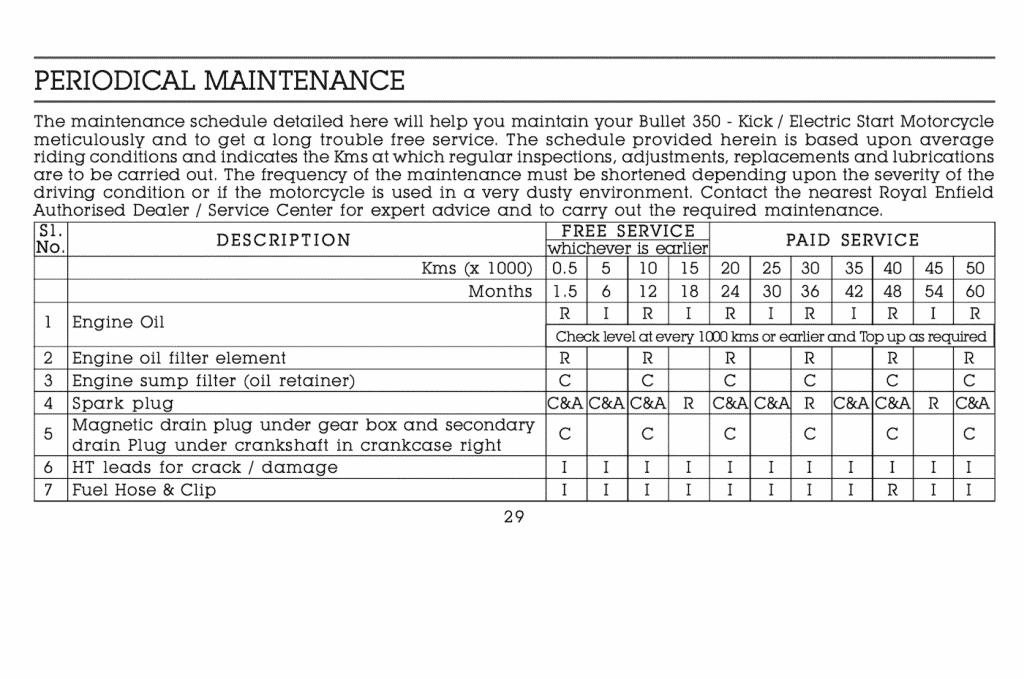
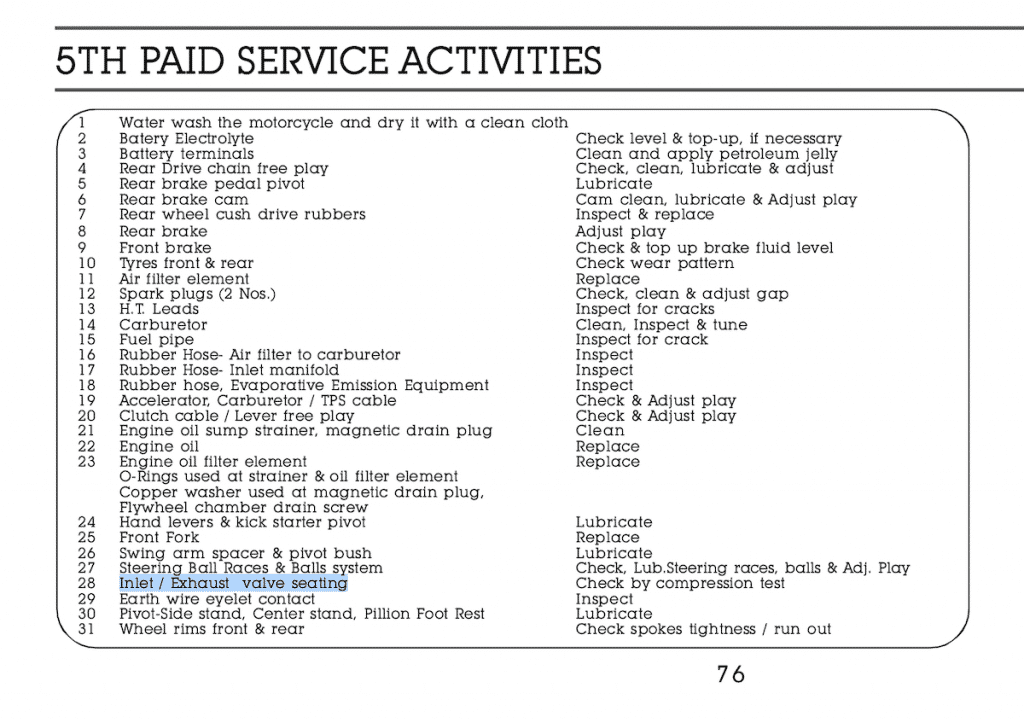
Royal Enfield provides all their manuals online and they’re full of diagrams and photos of how to do the maintenance. You can download them here.
